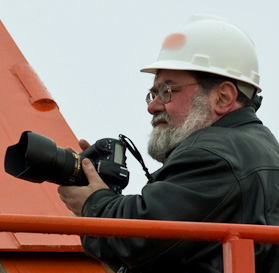The next phase of entertainment is often described as "What you want, when you want it, where you want it."
For me "where" is the TV in my family room. And the most convenient way to control "when" has been the cable provider's DVR. Of course, that isn't going to work for my antenna fed, over-the-air channels so I looked at a few other alternatives.
Some of my more technical friends have built very nice recording systems by using devices from Hauppage in conjunction with a PC. They work well, but require more work than I'm willing to do.
The devices from Tablo and SimpleTV looked interesting, but both require other parts, pieces, and an ongoing subscription for the program guide or services.
Tivo is another popular option that has a good reputation and a nice feature set. The user interface does well with reviewers, but the ongoing cost of the program guide (or high, one-time, lifetime price) steered me away.
In the end I decided to try the DVR+ from Channel Master. The purchase price is higher than other solutions, but there are no on-going fees or subscriptions. The program guide, sourced from Rovi, is the same guide used by many of the cable providers. Dual tuners provide for simultaneous recording of two programs. You can see the basic features on the website or in this 60 second promotional video.
In addition to a good antenna, you'll need a wi-fi connection to download the program guide and software updates.
With wi-fi connected you can also use the DVR+ to view YouTube, Pandora and a handful of Internet channels. These are integrated into the program guide, but you can't record them. They can be viewed while your tuners are busy recording OTA programs. There are about 30 other Internet channels, most of which I hid so they wouldn't clutter up the program guide. If you like watching shows about technology, you'll be happy the TWiT (This Week in Tech) network is included. So are ABC and WGN news rebroadcasts.
With an additional subscription, Sling-TV can be added for access to ESPN, AMC, TBS and a few of the more traditional cable channels. Again, these can't be recorded. I'll talk about Sling in another post.
Most of the Internet channels aren't anything to write home about. If you don't have a Smart TV you'll likely want another device like a Chromecast or a Roku for Netflix, Hulu, Amazon, or other similar sources. (Again, more about those later.)
Rather than describing the setup procedure here, I'm just going to say it wasn't difficult, taking about 30 minutes. Half of that was the download of a software update. If you're interested in the details take a look at this 10 minute video. I already had found a good place for my antenna. If you haven't, you'll need to add some time for that.
It's not cheap. You'll likely end up spending between $350 and $450 depending on the model and accessories you purchase. That sounds like a lot, but if you're offsetting the cost of a monthly cable bill, it could pay for itself in just a few months.
Think carefully about this. It will only be as good as your antenna signal. If the ChannelMaster breaks, even if it's under warranty, you'll need to send it back for repair or exchange. If your cable provider's DVR breaks, you just take it to an office and exchange it for a new one.
How does it work? So far, it has worked great. The OTA recording has been flawless. The buttons on the remote are well laid out. It runs only very slightly warm, using less than 10 watts, significantly less electricity than the cable company DVR (which you could use as a small space heater). It's surprisingly small at 8" deep, 10.5" wide and only 1/2" tall.
My single complaint is minor. Only the program name is shown on the program guide grid view. You'll need to press the Info button to see detailed program information. On the plus side, there is more detail than has been shown on my cable provider's version of the guide.
One warning about on-line reviews. Several, though generally positive, are old and contain incorrect information. A few incorrectly complain that the DVR+ couldn't record only new episodes in a series. One describes an older style remote control that seems to have been replaced by the nicer remote that was included with mine. Some said the HDMI cable wasn't included, but a cable was included in the box with my DVR+. So evidently Channel Master responded by fixing objections that were in earlier reviews. That's a good sign.
After a week of use, I'm very happy with the Channel Master for it's primary intended use as an over-the-air DVR. If you're satisfied with OTA and the included Internet Channels it could be a complete solution, but I was surprised Netflix, Hulu and some other streaming channels weren't included on the program guide. They seem to be everywhere these days. If you don't have a smartTV that already includes streaming channels, they can easily and economically be added to any TV with a $35 Chromecast or other streaming device. That does add one more device to the list.
This has already gone on too long. I'll talk about SlingTV and some other options next time.
gs





